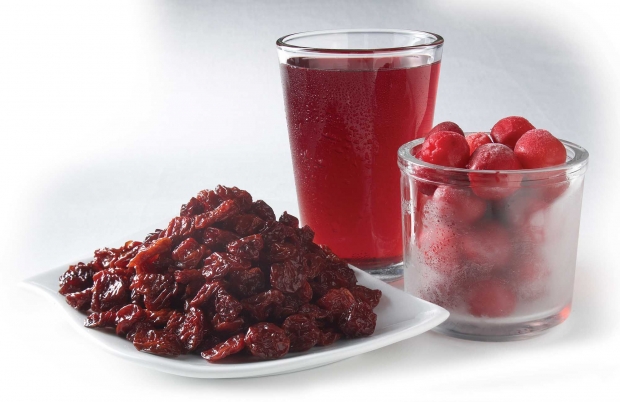
(Illustration courtesy Cherry Marketing Institute)
The federal marketing order governing the United States tart cherry industry comes up for its mandatory five-year renewal referendum this year, and industry leaders are turning out to encourage a positive vote.
There’s no real reason to think growers won’t vote yes, says Randy Willmeng, Watervliet, Michigan, one of 18 members of the Cherry Industry Administrative Board. But he wants to hear what they’re thinking and if they have concerns. Willmeng represents growers in southern Michigan on the CIAB board.
Willmeng spoke to growers during the Great Lakes Fruit, Vegetable, and Farm Market Expo in Grand Rapids, Michigan, and then headed for Traverse City, where four town hall-style meetings were to be held the following week. The referendum was also scheduled for discussion in January at an annual cherry industry get-together in Traverse City.
Michigan grows about three-fourths of the nation’s tart cherries, with the rest of the commercial crop coming from New York, Pennsylvania, Wisconsin, Utah, Washington, and Oregon. Willmeng, with his son Marc, has 100 acres of Montmorency tart cherries on their century-old family farm.
The federal marketing order is an instrument of the U.S. Department of Agriculture, which will conduct the vote in March, Willmeng said, although exact dates have not been announced.
Changed
Willmeng wants to make sure growers know how the order has changed in recent years. “It has gone from a restrictive order to a promotion order,” he said. By that he means, the CIAB board used to try to prevent low prices to growers caused by huge crops in some years by removing crop from market. Now, it also tries to encourage greater sales and market expansion.
The Cherry Industry Administrative Board collects $10 per ton and raises about $1.25 million in a normal year. The Cherry Marketing Institute also raises money in Michigan, under a state order that also assesses cherry growers $10 a ton.
Those two sources of funds, plus contributions from other states and $120,000 from Ontario, generated enough funds for a promotion budget of $1.6 million this year, plus funds for research and other uses. Since 2005, the industry has been sponsoring research to discover and document the health benefits of consuming tart cherries.
The CIAB’s major function is to match supply to demand. It can set a restriction on how many cherries can be marketed in a big crop year. Processors have the option of processing and storing surplus cherries, and these become part of a pool that can’t be sold without board approval. Since big crops are often followed by small crops, even crop failures, the cherries in the pool serve as a reserve supply for marketers.
In 2012, a year of massive crop failure caused by spring freezes across the eastern United States, imported cherries from Turkey and Poland gained a strong market share, and the industry is now trying to recover, Willmeng said. With the larger crop in 2013, a restriction of near 40 percent would have been authorized under older CIAB guidelines, Willmeng said, but instead it was set at only 5 percent. “We want to build supplies, not restrict them,” he said. “We want to get our market back.”
Montmorency
The amount of cherries that can be in the reserve pool was also increased from 50 million to 100 million pounds. The industry is also more specific in promoting Montmorency tart cherries—the kind grown in the North America—pointing out these cherries are different from the redder, less sour, European varieties. The industry has spent money in recent years proving the health benefits of Montmorency cherries—for joint health, muscle recovery after strenuous exercise, and pain relief—benefits that have not been shown to exist in the European varieties.
In recent years, the cost of maintaining tart cherries in inventory has fallen, largely because of a change in markets. Consumers are eating less cherry pie—and thus less canned and frozen pie filling—and more dried cherries and cherry juice and juice concentrate—all of which are cheaper to store. “Dried and concentrate are the big drivers in the market now,” Willmeng said.
Another change in the federal order deals with grower diversion credits. In a crop year that requires a 20 percent diversion, for example, processors get “diversion credits” they can sell to other processors. This allows some to divert more cherries, if they have weaker markets, and others to divert less and sell more cherries. Growers get such credits as well, so they, too, can buy or sell diversion credits. In the past, however, they were worth half as much as processor credits. That was changed; they are now equal in value.
One big concern Willmeng has is “history.” Growers had a federal order starting in the 1970s, but dissatisfaction led them to vote it down in the mid-1980s. After a few years of unregulated marketing, with grower prices falling to under a nickel a pound, they petitioned for and got the new order in 1996.
“If we ever don’t renew this, I doubt the government will ever help us get it back in the future,” Willmeng said. “We sure need it to pass, that’s all I know.” •






Leave A Comment